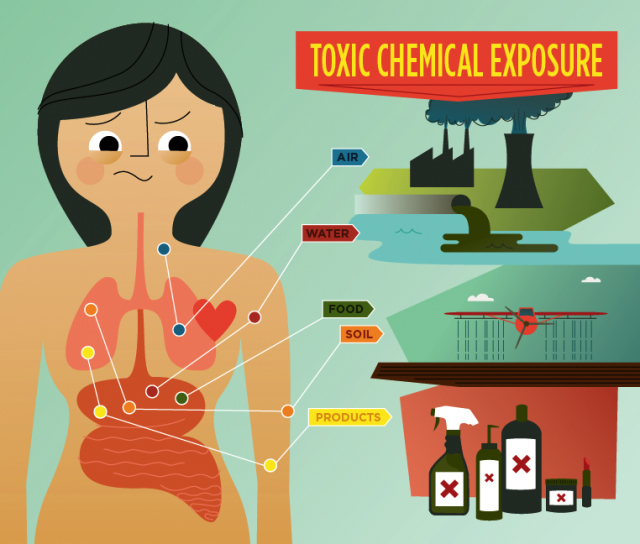Ohio Derailment: The Long-Term Impact Of Toxic Chemical Exposure On Buildings

Table of Contents
Types of Chemical Exposure and Building Materials Affected
The Ohio derailment released a complex mixture of hazardous substances, each posing unique threats to different building materials. Understanding these interactions is crucial for effective assessment and remediation.
-
Vinyl Chloride: This known carcinogen is highly volatile and can permeate porous building materials like wood and concrete, potentially leading to long-term contamination and off-gassing. Its presence requires rigorous testing and often necessitates material removal.
-
Butyl Acrylate and Ethylhexyl Acrylate: These acrylates are often found in paints, coatings, and adhesives. Exposure can cause degradation of these materials, leading to discoloration, peeling, and potentially compromising the building's protective barrier against the elements.
Different building materials react differently to this chemical exposure:
-
Concrete: While generally durable, concrete's porous nature allows for some chemical penetration, especially with prolonged exposure. This can weaken the structural integrity over time.
-
Wood: Wood is highly porous and readily absorbs chemicals, leading to potential long-term contamination and structural weakening.
-
Paint and Coatings: These can be damaged or degraded by the chemicals, potentially leading to leaching into the indoor environment.
-
Insulation: Certain insulation materials may absorb and retain these chemicals, posing an ongoing indoor air quality risk.
-
Examples of potential long-term effects:
- Vinyl chloride's potential to permeate porous materials like wood framing and drywall, requiring extensive remediation.
- The impact of butyl acrylate on paints and coatings, leading to discoloration, peeling, and the need for repainting or replacement.
- Potential leaching of chemicals from affected materials into the indoor environment, posing a continued health risk to occupants.
Assessing the Extent of Damage and Contamination
Assessing the full extent of damage and contamination from the Ohio derailment is complex and requires specialized expertise. A simple visual inspection is insufficient. Comprehensive environmental testing is essential to accurately determine the scope of the problem.
-
The need for specialized testing: Visual inspections alone cannot identify hidden contamination. Specialized testing is required to quantify the presence of hazardous substances within building materials and the surrounding environment.
-
Comprehensive environmental testing: This includes:
- Air quality testing: Monitoring for volatile organic compounds (VOCs) to assess indoor and outdoor air quality.
- Soil testing: Sampling soil around the affected buildings to determine the level of chemical contamination.
- Water testing: Analyzing water sources for contamination to ensure the safety of drinking water and other water uses.
-
Role of professionals: Qualified hazmat teams and environmental consultants are vital for conducting these assessments, ensuring safety, and interpreting the results. Their expertise is crucial for developing effective remediation strategies.
Remediation and Long-Term Monitoring Strategies
Remediation strategies for buildings affected by the Ohio derailment must be comprehensive and address the specific chemicals involved. Simple cleaning is often inadequate.
-
Remediation techniques: Strategies may include:
- Decontamination: Thorough cleaning and decontamination of surfaces using specialized methods.
- Material removal and replacement: Removing and safely disposing of severely contaminated building materials.
- Air filtration and ventilation improvements: Installing high-efficiency particulate air (HEPA) filters and improving ventilation to mitigate indoor air contamination.
-
Hazardous waste disposal: Proper disposal of contaminated materials as hazardous waste is crucial to prevent further environmental contamination.
-
Long-term monitoring: Ongoing monitoring of air, soil, and water quality is essential to ensure the effectiveness of remediation efforts and protect public health. This continuous monitoring allows for early detection of any recurring contamination.
-
Property values and insurance: The extent of the damage significantly impacts property values and insurance claims. Comprehensive documentation of the assessment, remediation, and monitoring processes is crucial for supporting insurance claims and protecting property owners' interests.
The Psychological Impact on Residents and Property Owners
Beyond the physical damage, the Ohio derailment has had a profound psychological impact on residents and property owners. The uncertainty surrounding long-term health effects and property value creates significant stress, anxiety, and potentially displacement. Access to mental health resources and community support is vital for addressing these concerns.
Conclusion
The Ohio derailment highlights the devastating long-term consequences of toxic chemical exposure on buildings and the surrounding community. Thorough assessment, comprehensive remediation, and consistent long-term monitoring are not just important; they're essential for mitigating risks and protecting the health and safety of East Palestine residents. Understanding the potential impact of toxic chemical exposure on buildings is vital for property owners, insurance companies, and government agencies. To ensure the safety of your property and community after the Ohio derailment, contact a qualified environmental consultant to assess the potential impacts and develop a comprehensive plan for remediation and long-term monitoring of toxic chemical exposure.

Featured Posts
-
 Cassidy Hutchinson Key Witness To January 6th Announces Memoir
Apr 28, 2025
Cassidy Hutchinson Key Witness To January 6th Announces Memoir
Apr 28, 2025 -
 Office365 Data Breach Leads To Multi Million Dollar Heist
Apr 28, 2025
Office365 Data Breach Leads To Multi Million Dollar Heist
Apr 28, 2025 -
 Teslas Rise Lifts Us Stocks Tech Giants Power Market Growth
Apr 28, 2025
Teslas Rise Lifts Us Stocks Tech Giants Power Market Growth
Apr 28, 2025 -
 World Famous Chef And Eva Longoria A Fishermans Stew Story
Apr 28, 2025
World Famous Chef And Eva Longoria A Fishermans Stew Story
Apr 28, 2025 -
 The Broadcom V Mware Deal A 1 050 Price Hike For At And T And Potentially Others
Apr 28, 2025
The Broadcom V Mware Deal A 1 050 Price Hike For At And T And Potentially Others
Apr 28, 2025
Latest Posts
-
 Grim Retail Sales A Sign Of Rate Cuts To Come
Apr 28, 2025
Grim Retail Sales A Sign Of Rate Cuts To Come
Apr 28, 2025 -
 A Look Back Posadas Game Changing Homer In The 2000 Yankees Royals Matchup
Apr 28, 2025
A Look Back Posadas Game Changing Homer In The 2000 Yankees Royals Matchup
Apr 28, 2025 -
 Hudsons Bay Store Closing Sale Find Deep Discounts Up To 70
Apr 28, 2025
Hudsons Bay Store Closing Sale Find Deep Discounts Up To 70
Apr 28, 2025 -
 70 Off Hudsons Bay Liquidation Sale Now On At Remaining Stores
Apr 28, 2025
70 Off Hudsons Bay Liquidation Sale Now On At Remaining Stores
Apr 28, 2025 -
 Final Days Of Hudsons Bay Huge Markdowns Up To 70 During Liquidation
Apr 28, 2025
Final Days Of Hudsons Bay Huge Markdowns Up To 70 During Liquidation
Apr 28, 2025
